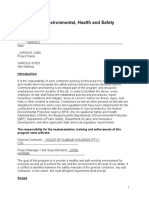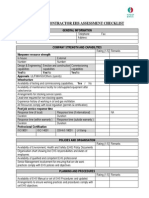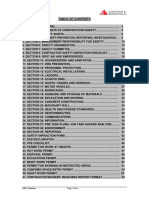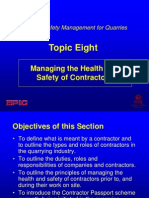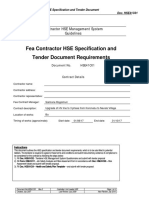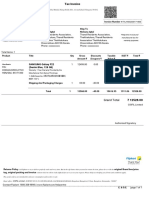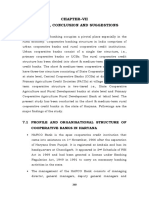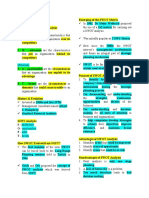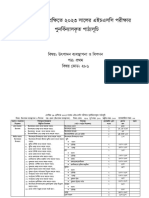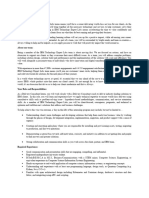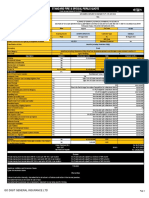1.
HES Review
CONTRACTOR shall as part of the safety management system ensure that plans, schedules and
procedures are in place to review all his systems, Working practices, procedures and facilities.
CONTRACTOR’s system for HES reviews shall include but not limited to:
1. Performance review
2. Inspections
3. Audits
CONTRACTOR’s system of reviews shall include his own systems and facilities as well as major
Subcontractors and suppliers/vendors.
Performance reviews shall be carried out by the responsible manager and shall occur at regular
intervals over the course of the project. As a minimum, such reviews shall examine the current project
activities against the minimum requirements of this document. Areas of improvement shall be
identified and actions developed by CONTRACTOR to remedy any deficiencies.
CONTRACTOR’s HES performance reviews shall cover the day-to-day monitoring of activities.
Performance reviews shall include assessment of Working practices systems and documentation.
Inspections shall include formal as well as informal site observations and walk through/sampling of
procedures for effectiveness. A schedule of performance reviews and inspections shall be developed
by CONTRACTOR and issued to COMPANY for review and information.
A critical element of HES reviews is to acknowledge those persons, teams and activities that show
commitment to COMPANY’s behavioral based safety program.
Results of performance reviews shall be published across the project and used as lessons learned to
improve performance.
CONTRACTOR audits that are carried out as part of CONTRACTOR’s quality assurance system
shall cover HES aspects of CONTRACTOR’s system and facilities.
CONTRACTOR shall provide COMPANY with copies of all reports from performance reviews,
formal inspections and audits.
1.1. HES Performance Reporting
CONTRACTOR shall report on a monthly basis those performance indicators identified in
Section 9, HES Metrics. Monthly reports shall be submitted to COMPANY by an agreed day,
typically the fourth (4th) Working day of each month and shall reflect data compiled for the
previous month, year to date and project to date periods. COMPANY will review and
comment upon the listing of indicators. Performance indicators shall be submitted for each
Work Site. Performance indicators shall comprise of data compiled for all CONTRACTOR
and major Subcontractor activities.
Each level of the organization shall establish and maintain appropriate processes for
recording and reporting HES performance indicators as part of the regular project control
process and report HES performance at the same frequency as other key business metrics.
Each level of CONTRACTOR’s organization shall conduct regular HES performance
evaluations to ensure that the system is implemented, maintained and remains effective.
1.2. COMPANY Inspections
� COMPANY reserves the right to carry out HES inspections of CONTRACTOR’s
construction facilities on a regular and spot check basis. Such inspections may include but are
not limited to the following:
1. Positions/actions of people
2. Potential hazards
3. PPE
4. Tools and equipment
5. Orderliness/housekeeping
6. Work areas
7. Procedures
COMPANY reserves the right to suspend the Work at any time if any unsafe practices or
conditions are found. CONTRACTOR shall not resume Work until such unsafe practices or
conditions are corrected. Costs and schedule impact incurred for correction of unsafe
practices shall be borne by CONTRACTOR.
CONTRACTOR shall implement all instructions from COMPANY based upon such
inspections within a time scale mutually agreed between COMPANY and CONTRACTOR.
COMPANY also reserves the right to remove or restrict access onto the site by any person
found to be in non-compliance with HES requirements.
COMPANY and its authorized representatives shall have unrestricted access to all Work
Sites for audit purposes at all reasonable times to facilities, equipment, materials, personnel
and records of CONTRACTOR and its Subcontractors.
1.3. COMPANY’s HES Audits
COMPANY’s HES audits are independent assessments of the adequacy, validity and
reliability of the management safety system in terms of project policy, goals and objectives.
The objective of COMPANY HES MP audit process is as follows:
1. Check the level of commitment to the Behavioral Based Safety program
2. Prevent injury and loss
3. Reinforce positive safety behavior
4. Verify compliance with COMPANY’s HES requirements
5. Identify weakness in safety systems
6. Identify and correct unsafe situations
7. Motivate people
Trained COMPANY personnel independent of the Work activity being audited will carry out
the audits.
The implementation of audits by COMPANY does not relax the requirement of the
CONTRACTOR to have an appropriate CONTRACTOR operable audit program.
1.4. Visits
CONTRACTOR shall:
� 1. Ensure that safe arrangements are made for visits to the Work Site(s) by COMPANY
and COMPANY authorized visitors and coordinate such visits with COMPANY.
2. Ensure that all visitors, who are directly associated with the Work, comply with all
CONTRACTOR’s local HES procedures.
3. Require all visitors to Work Site(s), who are directly associated with the Work, to
complete visitors HES briefing.
4. Ensure that all visitors, who are directly associated with the Work, are equipped with
appropriate PPE and that the visitors have been adequately informed of potential
hazards and the applicable HES and emergency response procedures.
5. Maintain a record of all visitors, who are directly associated with the Work, and upon
request provide record to COMPANY.
Visits by any third parties, who are directly associated with the Work, such as
Subcontractors, shall be subject to the CONTRACTOR’s internal security procedures. All
such visits shall be restricted to only those areas that are directly related to the Work and
associated Work areas. There shall be no photography without the written permission by
COMPANY.
Third parties not directly associated with or not having business associated with the Work
shall not be allowed to visit the Worksite(s) without specific permission from COMPANY.
1.5. Review, Inspection and Audit Findings
Through COMPANY’s and CONTRACTOR’s review and audit processes, unsafe conditions
during construction and problems in the implementation of the HES MP will be identified.
CONTRACTOR shall correct any unsafe or hazardous conditions and take action in
accordance with COMPANY’s instructions.
2. HES metrics
CONTRACTOR shall collect HES metrics as a way of assessing the performance of the project
execution. The metrics shall be reported to COMPANY.
The definition of the metrics to be collected shall be agreed with COMPANY. For the purpose of HES
metrics Major Subcontractor’s resident in CONTRACTOR Work locations, e.g. fabrication sites or
working offshore, etc., shall be considered in the HES metrics.
The basis for performance indicators to be reported shall be clearly defined in CONTRACTOR’s HES
management system.
CONTRACTOR shall submit to COMPANY the specifics of its occupational health recording system and
submit copies of reports of occupational illness incurred during the project.
The following lagging metrics, segregated into 4 categories: Design; Fabrication; Construction;
Installation, shall be included in reports to COMPANY:
1. Number of people and hours Worked for all contractor’s for all locations.
2. Total recordable incident rate (TRIR) – Number of Work related injury and illness cases per
200,000 hours Worked.
3. Days Away From Work Rate (DAFWR) – Number of Work related injury and illness cases that
involve days away from Work and/or restricted Work activity per 200,000 hours Worked.
� 4. Recordable fires – The number of fires where there was a loss of structures, equipment, raw
materials or products, resulting in at least $1,000 damage and/or where an injury or fatality
occurred in a facility owned or operated by CONTRACTOR.
5. Spills – The number of accidental or unauthorized releases or discharges of hydrocarbons and
chemicals and any petroleum derived products and intermediates from its primary intended
container or conveyance structure. Reportable spills including all spills to water and spills to land
of one (1) barrel or more.
6. Spill volume – The total volume of reportable petroleum spills excluding the non-petroleum
fraction (e.g., produced water). The volume of the spill should not be reduced by the volume
within secondary containment or the volume recovered.
CONTRACTOR shall identify, monitor and report as a minimum the following leading indicators to
measure the successful implementation of the safety management system. The metrics shall be described
as part of CONTRACTOR’s HES Plan and reflect the areas of focus for the appropriate Worksites:
1. BBS participation per period
2. Safety meetings held per period (Planned vs. Actual)
3. Safety meeting attendance











